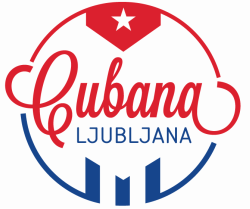|
Author: Uroš Švagan Estimated read time: 10 minutes This article is part of a four-part saga about timba history and development.
Timba's rhythmic structures use autochthonous instruments in a highly syncopated manner, completely incomparable to any other style of music. Its melodic and harmonic structures can easily be compared to jazz and sophisticated chansons. From a lyrical point of view, timba is highly contradictory. On one hand it deals with deeply religious subjects and, on the other hand, with extremely obscene ones. In between the seemingly innocent lines lacking complexity is the whole universe of metaphoric provocations, reflecting the sentiment of the Cuban street. Nevertheless, timba is a very pleasurable and upbeat despite the aforementioned complexity. Even when touching the darker subjects, it always provides much hope and bittersweet optimism. Its syncopated rhythm pushes your body into a hard-to-remain-still mode, while its melodies and harmonies can bring you to tears. Timba is a mirror of the Cuban soul. Band and song structure Timba bands are the size of small orchestras, numbering around 15 in strength, which makes the music quite saturated. The song structure typically avoids the verse-chorus form, but instead implements a more diverse structure where the tension is built using the form resembling a dramatic arc. The songs typically begin with the narrative part, where the story slowly develops. In the montuno section that follows, the song achieves its climax, where the music becomes very lively with a great deal of cunning improvisation. Montuno is usually the longest part of the song that gives the dancers a proper chance to show off. Finally, a falling action is followed by denouement. These song segments can be further divided into so called ‘gears’, which define the energy level of a song part. Dancers learn to recognize the song parts, so that they can respond with the energy and movements appropriate for the intensity of the song part.
Let's get started then!
Timba was invented in the end of 80's and the beginning of 90's, peaking in popularity at around 1995. These days timba might not be as popular as it once was, but is actually a constantly developing music genre gaining in quality and soaking in ever more influences. Timba is always aligned with trends, but never falls prey to them. In this series of articles we will present how timba came into existence through social, economic, and political circumstances, and through musical innovations after the Cuban revolution. We will explore its rise and its fall in the 90's. The last article will be dedicated to the modern timba, which is being revived by musicians and dance instructors all over the world. But, when searching for the roots of timba, one can always trace them further back into the history, to the times of indigenous civilizations, Christopher Columbus, the slave trade, and Africa. Continued in Part 2.
0 Comments
Leave a Reply. |
Tremenda MuelaTremenda Muela (big mouth) is a blog for dancers, who want to know too much about Cuban music, dance, and culture. Archives
May 2018
Categories |
© 2024 // Cubana Ljubljana // Z uporabo spletne strani se strinjate, da za potrebe navigacije in analitike uporabljamo piškotke

 RSS Feed
RSS Feed